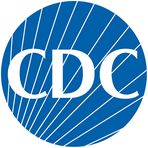A Double-Edged Sword: The Dangers of Lead in Baby Food and the Promise of Weight-Loss Drugs
May 26, 2025, 9:59 am

Location: United States, Georgia, Atlanta
Employees: 10001+
Founded date: 1946
In the world of food safety, the stakes are high. Recent events have cast a shadow over baby food products, while new research offers a glimmer of hope for diabetes patients. The juxtaposition of these two stories highlights the complexities of health and safety in America today.
On May 23, 2025, Publix announced a recall of baby food pouches due to elevated lead levels. This wasn’t an isolated incident. Just two months prior, Target pulled over 25,000 packages of its Good & Gather Baby Pea, Zucchini, Kale & Thyme Vegetable Puree for the same reason. The implications are staggering. Lead is a silent predator, lurking in food products and threatening the health of our most vulnerable—children.
Lead exposure is no trivial matter. The Centers for Disease Control and Prevention (CDC) has long warned that there is no safe level of lead. For children, the consequences can be dire. Lead can inflict damage on the brain and nervous system, stunting growth and development. It’s a heavy metal that can seep into food from various sources: soil, air, water, and industrial processes. The American Academy of Pediatrics has raised alarms about this contamination, urging vigilance.
The recent recall follows a troubling trend. In 2023, North Carolina health officials investigated lead poisoning cases linked to WanaBana apple cinnamon fruit puree. The findings were alarming. Some pouches contained lead levels 2,000 times higher than the FDA’s maximum recommended limit. This led to a nationwide outbreak, with 566 confirmed cases across 44 states. The CDC’s childhood lead poisoning program, which could have provided crucial oversight, was dismantled in April 2023 due to federal funding cuts. The irony is stark: as the need for vigilance grows, resources dwindle.
In contrast, a recent study has shed light on the potential benefits of GLP-1 receptor agonists, a class of drugs used to treat diabetes and obesity. These injections mimic hormones in the gut and brain, regulating appetite and feelings of fullness. The study analyzed data from 43 U.S. health systems, comparing two groups: those with obesity and diabetes taking GLP-1 drugs and those on traditional diabetes medications like sitagliptin.
The results were promising. After four years, those on GLP-1 drugs had a 7% lower risk of developing obesity-related cancers and an 8% lower risk of death from any cause. The numbers tell a compelling story. In the GLP-1 group, there were 2,501 new cases of obesity-related cancer, compared to 2,671 in the other group. The findings were particularly notable among women, though the reasons for the disparity between genders remain unclear.
The potential of these drugs is tantalizing. They offer a dual benefit: managing diabetes while potentially lowering cancer risk. However, they are not without side effects. Nausea and stomach pain can accompany their use, and they don’t work for everyone. The landscape of diabetes treatment is evolving, but caution is warranted.
As we navigate these two narratives, the contrast is stark. On one hand, we have the alarming reality of lead contamination in baby food, a crisis that demands immediate attention. On the other, we see the promise of innovative treatments that could change lives for the better. The challenge lies in balancing safety and progress.
The food industry must take responsibility. Consumers deserve transparency and assurance that the products they buy are safe. The recalls are a wake-up call. Parents should not have to worry about harmful substances in baby food. It’s a basic expectation, yet one that seems increasingly fragile.
Meanwhile, the medical community must continue to explore the potential of drugs like GLP-1 receptor agonists. They represent a beacon of hope for those struggling with obesity and diabetes. The findings of the recent study should spur further research and investment in these treatments. Lives are at stake.
The intersection of food safety and medical innovation paints a complex picture. On one side, we face the harsh realities of contamination and health risks. On the other, we glimpse the future of medicine, where treatments could reduce risks and improve quality of life.
In the end, vigilance is key. Consumers must stay informed and proactive. Health officials need to advocate for stronger regulations and funding to protect public health. The stakes are too high to ignore. As we move forward, let’s ensure that safety and innovation walk hand in hand. The health of our children and the future of medical treatments depend on it.
In this dual narrative, we find a call to action. The battle against lead in baby food is far from over. Simultaneously, the promise of new treatments for diabetes and obesity shines brightly. It’s a reminder that in the world of health, progress and peril often coexist. We must navigate this landscape with care, always prioritizing safety and well-being.
On May 23, 2025, Publix announced a recall of baby food pouches due to elevated lead levels. This wasn’t an isolated incident. Just two months prior, Target pulled over 25,000 packages of its Good & Gather Baby Pea, Zucchini, Kale & Thyme Vegetable Puree for the same reason. The implications are staggering. Lead is a silent predator, lurking in food products and threatening the health of our most vulnerable—children.
Lead exposure is no trivial matter. The Centers for Disease Control and Prevention (CDC) has long warned that there is no safe level of lead. For children, the consequences can be dire. Lead can inflict damage on the brain and nervous system, stunting growth and development. It’s a heavy metal that can seep into food from various sources: soil, air, water, and industrial processes. The American Academy of Pediatrics has raised alarms about this contamination, urging vigilance.
The recent recall follows a troubling trend. In 2023, North Carolina health officials investigated lead poisoning cases linked to WanaBana apple cinnamon fruit puree. The findings were alarming. Some pouches contained lead levels 2,000 times higher than the FDA’s maximum recommended limit. This led to a nationwide outbreak, with 566 confirmed cases across 44 states. The CDC’s childhood lead poisoning program, which could have provided crucial oversight, was dismantled in April 2023 due to federal funding cuts. The irony is stark: as the need for vigilance grows, resources dwindle.
In contrast, a recent study has shed light on the potential benefits of GLP-1 receptor agonists, a class of drugs used to treat diabetes and obesity. These injections mimic hormones in the gut and brain, regulating appetite and feelings of fullness. The study analyzed data from 43 U.S. health systems, comparing two groups: those with obesity and diabetes taking GLP-1 drugs and those on traditional diabetes medications like sitagliptin.
The results were promising. After four years, those on GLP-1 drugs had a 7% lower risk of developing obesity-related cancers and an 8% lower risk of death from any cause. The numbers tell a compelling story. In the GLP-1 group, there were 2,501 new cases of obesity-related cancer, compared to 2,671 in the other group. The findings were particularly notable among women, though the reasons for the disparity between genders remain unclear.
The potential of these drugs is tantalizing. They offer a dual benefit: managing diabetes while potentially lowering cancer risk. However, they are not without side effects. Nausea and stomach pain can accompany their use, and they don’t work for everyone. The landscape of diabetes treatment is evolving, but caution is warranted.
As we navigate these two narratives, the contrast is stark. On one hand, we have the alarming reality of lead contamination in baby food, a crisis that demands immediate attention. On the other, we see the promise of innovative treatments that could change lives for the better. The challenge lies in balancing safety and progress.
The food industry must take responsibility. Consumers deserve transparency and assurance that the products they buy are safe. The recalls are a wake-up call. Parents should not have to worry about harmful substances in baby food. It’s a basic expectation, yet one that seems increasingly fragile.
Meanwhile, the medical community must continue to explore the potential of drugs like GLP-1 receptor agonists. They represent a beacon of hope for those struggling with obesity and diabetes. The findings of the recent study should spur further research and investment in these treatments. Lives are at stake.
The intersection of food safety and medical innovation paints a complex picture. On one side, we face the harsh realities of contamination and health risks. On the other, we glimpse the future of medicine, where treatments could reduce risks and improve quality of life.
In the end, vigilance is key. Consumers must stay informed and proactive. Health officials need to advocate for stronger regulations and funding to protect public health. The stakes are too high to ignore. As we move forward, let’s ensure that safety and innovation walk hand in hand. The health of our children and the future of medical treatments depend on it.
In this dual narrative, we find a call to action. The battle against lead in baby food is far from over. Simultaneously, the promise of new treatments for diabetes and obesity shines brightly. It’s a reminder that in the world of health, progress and peril often coexist. We must navigate this landscape with care, always prioritizing safety and well-being.
